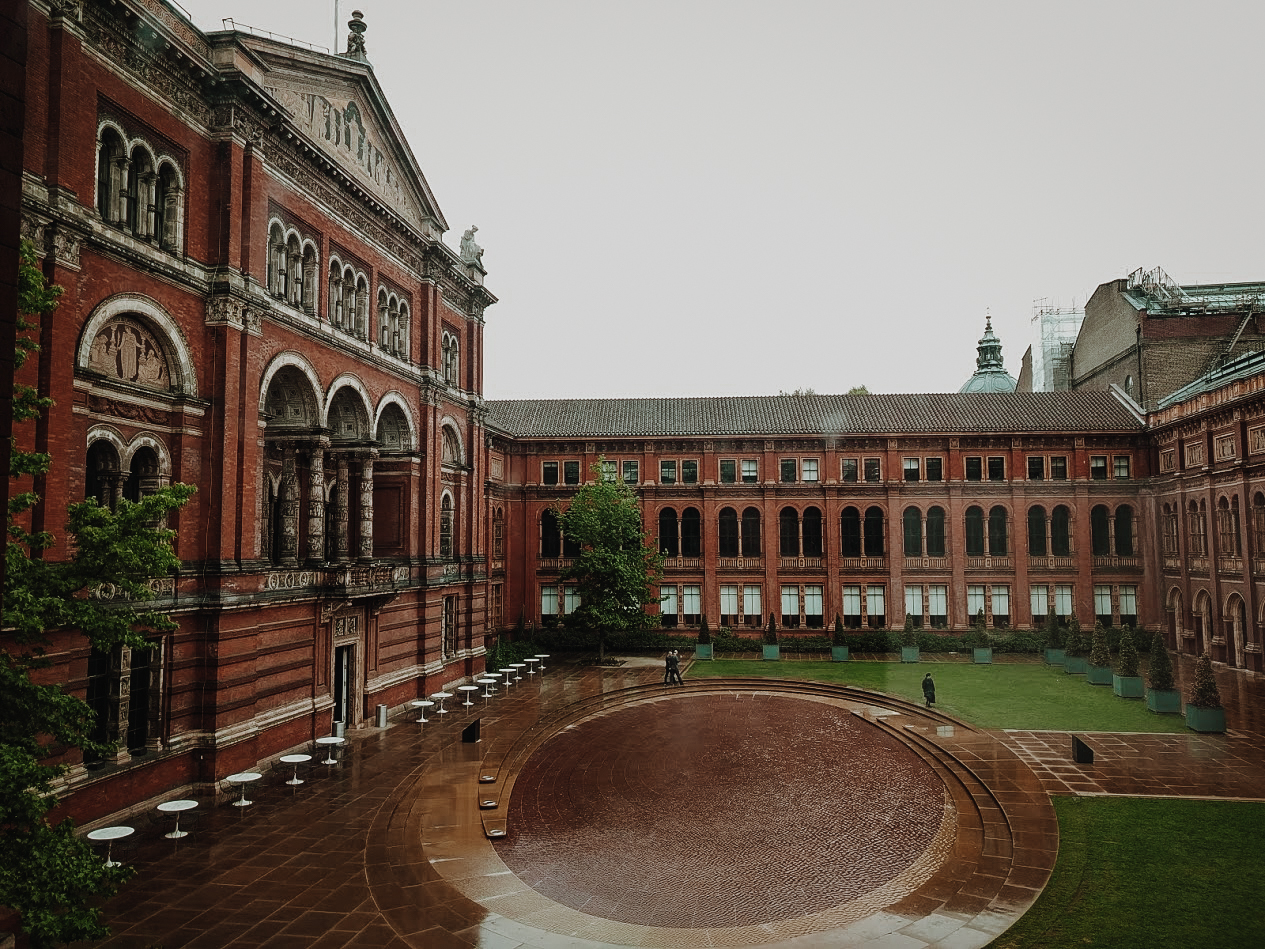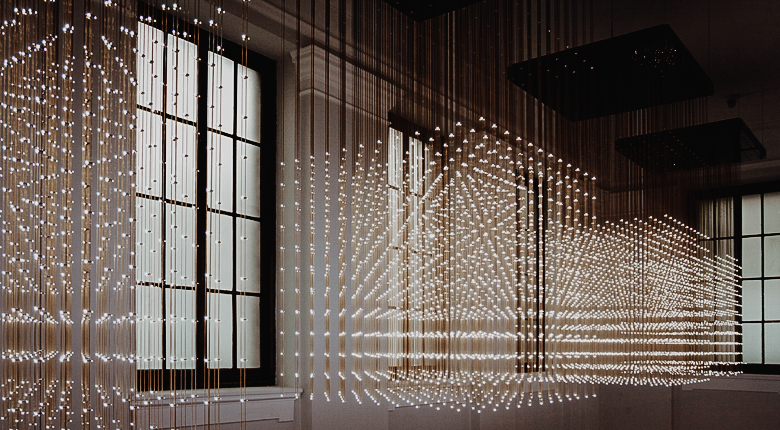Difference between revisions of "Victoria and Albert Museum"
From Londonhua WIKI
| Line 60: | Line 60: | ||
===Iron and Steel Exhibit=== | ===Iron and Steel Exhibit=== | ||
| − | The Victoria and Albert Museum has one of the largest collections of decorative iron and steel from the 12th Century to present day. Most of it comes from Continental Europe and Britain and there is a large variety. There is everything from gates, locks, and keys, to | + | The Victoria and Albert Museum has one of the largest collections of decorative iron and steel from the 12th Century to present day. Most of it comes from Continental Europe and Britain and there is a large variety. There is everything from gates, locks, and keys, to candlesticks, earrings and necklaces. Iron is one of the most useful and abundant metals but it is not easy to extract or mold. However because of Iron's characteristics, it allows more difficult forms to be created. Iron is made by smelting, heated with a mixture of ore and charcoal, to a staggering temperature of 12000 degrees C. Once in a while the mixture would be hammered to condense it, and eliminate any impurities. There have been many different methods of smelting between 3500 BC to AD 1700. However in 1713 a cheaper way of producing iron came about, Abraham Darby smelted ore using coke, which is derived from coal. Wrought Iron and cast Iron are the two most commonly used types of Iron. The difference between the two is that wrought iron is shaped by a blacksmith, and therefore no two pieces are the same. Cast iron is produced in a boundary, which allows for the mass production of an item, the iron is melted to liquid form and placed in a mold. This process makes it brittle but still strong, so it is ideal for use in bracelets or railing. Iron is used when a strong material is needed. And because of its decorative qualities, many architects have been attracted to it. |
=References= | =References= | ||
Revision as of 10:09, 16 May 2017
V&A Museum
The Victoria and Albert museum (V&A) is a free museum in Kensington, surrounded by the Natural History Museum, and the Science Museum. Named after Queen Victoria and Prince Albert in 1852, the V&A is home to the words largest collection of art and design artifacts.
 |
Background
The Building
The V&A building houses the vast collection of objects, while being a magnificent sight to see on its own. A quick chat with a security guard will let you know that the entire footprint covers 12 acres of land, with galleries on 6 floors and one underground. The total number of galleries in the museum is 145. At the center sits a courtyard and garden that features an outdoor cafe and a water pool. Gallery space is constantly being added or remodeled, with the most recent addition being completed onto the building in 2012, but a total of 4 current galleries are remodeled.
Swarm Study / III
This experimental art exhibit was created by Random International, an art studio that develops interesting and creative displays and exhibits across the world. Swarm Study / III hangs in the ceramics section of the museum and consists of several cubes of hanging brass cords and LEDs. As visitors ascend or descend the stairwell, balls of light will seemingly follow the visitors on their path.
The Collection
The museum houses the largest collection of art and design items in the world, but only displays about half of that in the physical space. However, the number that is displayed is quite significant at 2,280,000 items spread across the 145 galleries. This collection is broken up into categories by type of items, such as Ceramics, textiles, metals, jewelry, furniture, sculptures and many more. The items in the categories are then also placed by origin, with with locations such as Europe, North American, Asia and Africa. The museum's oldest items are up to 5,000 years old, while some parts of the collection are objects from as recent as 2017.
Ceramics
Victoria and albert Museum has the largest and most comprehensive ceramics and glass collection in the world, with over 80,000 objects from around the world. we can see ceramics from every continent. We can see scatter pieces around the museum but in the top floor there is a designated area just for ceramics. Most are in display on the top floor inside "visible storage".
Meissen Porcelain
Cast Courts
Pink Floyd
Asian Exhibit
Islamic Art
The Victoria and Albert Museum contains over 4.5 million objects from different time periods. 19,000 of those are from the Islamic world. They range from the 7th century and span all the way to the early 20th century. The gallery that contains around 400 of these items at a time is called The Jameel Gallery of Islamic Art and opened in 2006 with Ardabil Carpet being the centerpiece of the gallery. This is one of a pair of Persian rugs while the other is located in Los Angeles. The Jameel Gallery of Islamic Art holds items from Afghanistan, Spain, North Africa, the Middle East, and Central Asia. Another of the most famous objects of this gallery is a 10th century rock crystal ewer. This is an amazing example of Fatimid art, an artifact from the Fatimid Caliphate. Along with these items, the gallery holds many different examples of calligraphy in Qur'āns of multiple time periods. One of the largest objects in this display is a minbar from a mosque in Cairo that dates back to the 15th century. There are also ceramics, rugs, glasswork, carpets, tile work, and even a fireplace on display at the Victoria and Albert Museum.
Korean Exhibit
The Korean Exhibit mostly showed
Iron and Steel Exhibit
The Victoria and Albert Museum has one of the largest collections of decorative iron and steel from the 12th Century to present day. Most of it comes from Continental Europe and Britain and there is a large variety. There is everything from gates, locks, and keys, to candlesticks, earrings and necklaces. Iron is one of the most useful and abundant metals but it is not easy to extract or mold. However because of Iron's characteristics, it allows more difficult forms to be created. Iron is made by smelting, heated with a mixture of ore and charcoal, to a staggering temperature of 12000 degrees C. Once in a while the mixture would be hammered to condense it, and eliminate any impurities. There have been many different methods of smelting between 3500 BC to AD 1700. However in 1713 a cheaper way of producing iron came about, Abraham Darby smelted ore using coke, which is derived from coal. Wrought Iron and cast Iron are the two most commonly used types of Iron. The difference between the two is that wrought iron is shaped by a blacksmith, and therefore no two pieces are the same. Cast iron is produced in a boundary, which allows for the mass production of an item, the iron is melted to liquid form and placed in a mold. This process makes it brittle but still strong, so it is ideal for use in bracelets or railing. Iron is used when a strong material is needed. And because of its decorative qualities, many architects have been attracted to it.
References
If appropriate, add a references section
External Links
If appropriate, add an external links section
Image Gallery
If appropriate, add an image gallery
